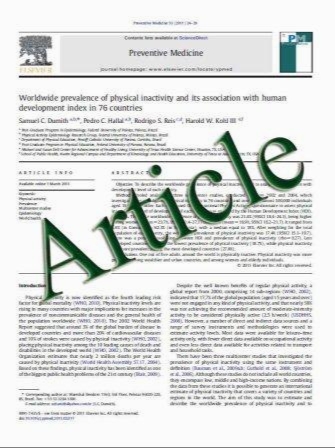Role of intra-operative ultrasound-guided reduction of nasal bone fracture in patient satisfaction and patient nasal proWle (a randomized clinical trial)
- نوع فایل : کتاب
- زبان : انگلیسی
- مؤلف : Mohamed Abu-Samra · Gehad Selmi · Hanan Mansy · Mahmoud Agha
- چاپ و سال / کشور: 2011
Description
The objective of this study was to evaluate the beneWts of intra-operative ultrasonic guidance in the management of isolated nasal bone fractures. A prospective, randomized, controlled, double blinded study was designed. Sixty-eight patients who had isolated fracture nose were treated by either a simple closed reduction or by ultrasound-guided reduction (34 patients each) with a follow up for an average of 4.5 and 5.5 months, respectively. Post-traumatic and post-reduction nasal proWles were compared (by blinded photographer), and patient’s satisfaction was analyzed after reduction in both groups. We used Student’s t test for independent groups to compare between the average patient’s scores. The average patient’s nasal proWle score for closed reduction group was 2.31. Thirteen patients (40.6%) had scored 3, 16 (50%) had scored 2, and three (9.4%) patients had scored 1. The average patient’s nasal proWle score for ultrasonic assisted group was 2.72. Twenty-four patients (75%) had scored 3, 7 (22%) had scored 2, and one (3%) patient had scored 1. The average patient’s satisfaction score for closed reduction was 2.62. Twenty-four patients (75%) had scored 3, 4 (12.5%) patients had scored 2, and 4 (12.5%) patients had scored 1. The average patient’s satisfaction score for ultrasonic assisted group was 2.78. Twenty-six patients (81%) scored 3, 5 (16%) patients scored 2, and one (3%) patient scored 1. Patients undergoing ultrasonic nasal bone reduction scored signiWcantly better nasal proWle scores than patients undergoing simple closed reduction, on the other hand, patient satisfaction scores had no signiWcant diVerence between both groups. Treating nasal bone fractures with the assistance of intra-operative ultrasound resulted in a signiWcantly better nasal proWle appearance, than treating it by simple closed reduction
Eur Arch Otorhinolaryngol (2011) 268:541–546, Received: 4 July 2010 / Accepted: 2 October 2010 / Published online: 21 October 2010 © Springer-Verlag 2010


